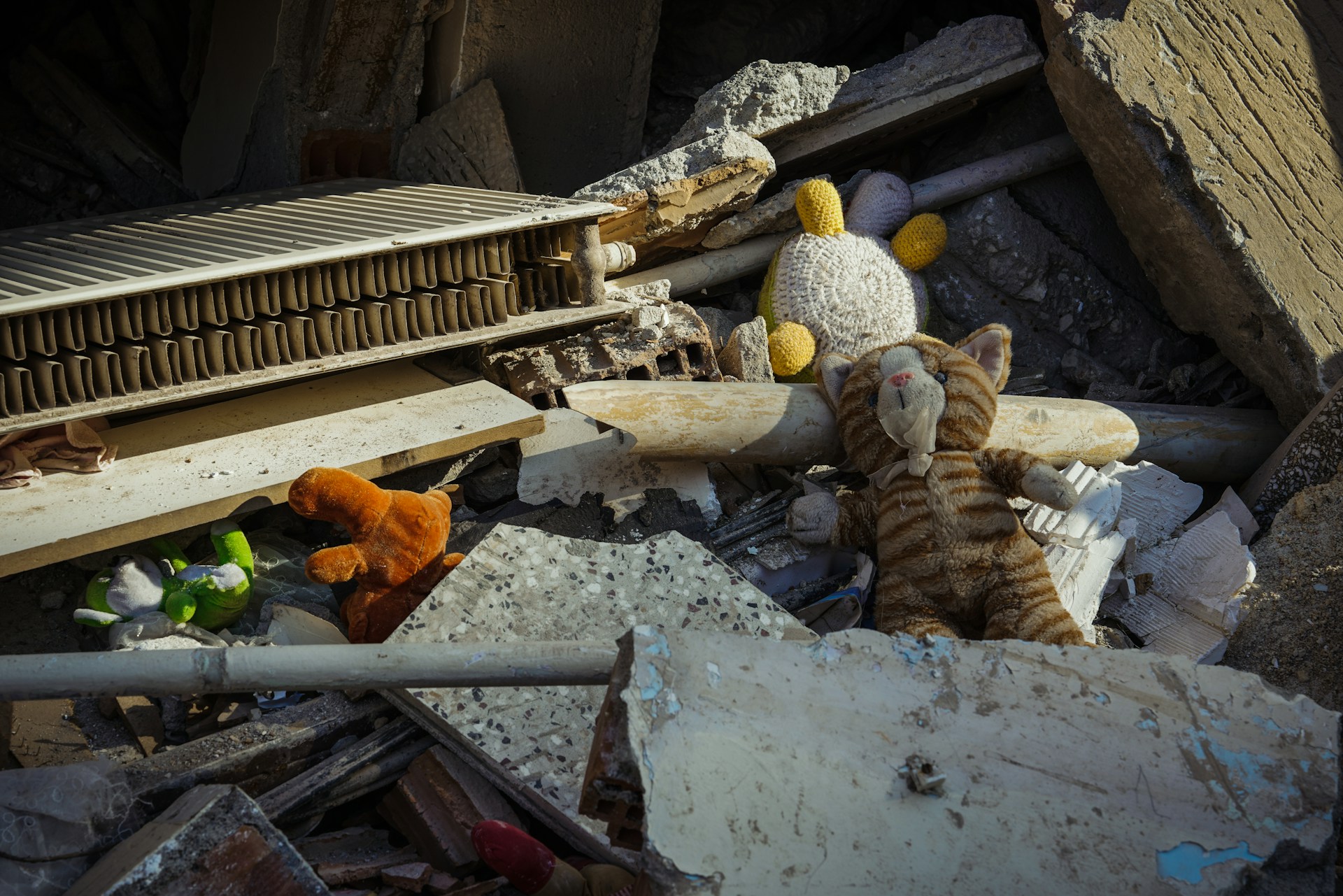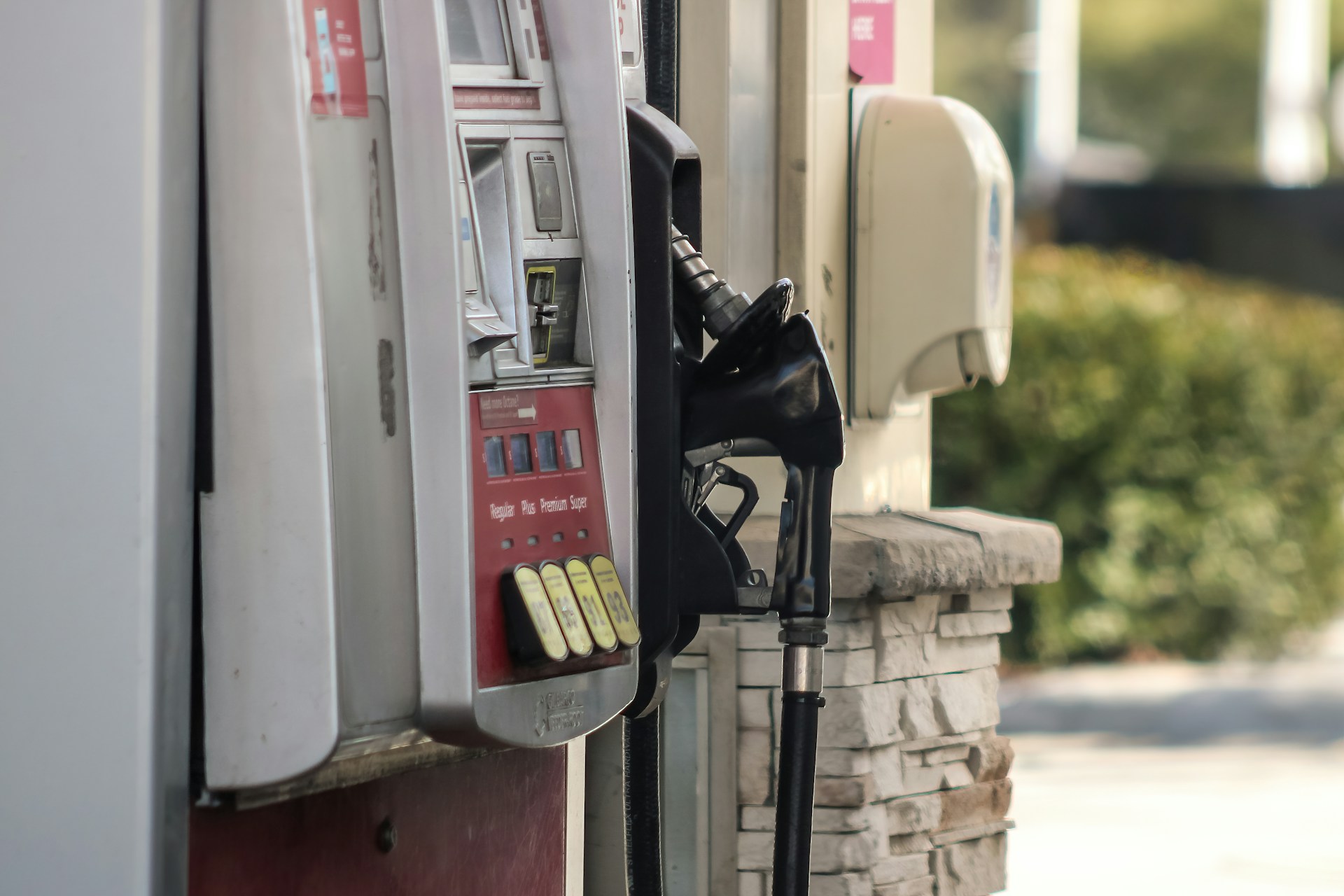Preparedness
Unveiled Footage Stirs Debate: Amber Alert Teen, Her Abductor Killed by Police

In a revelation that has sent shockwaves across California, new audio and video evidence has uncovered the unsettling truth about a tragic incident that occurred in September 2022. A 15-year-old girl at the center of an Amber Alert ended up losing her life, not due to the criminal actions of her kidnapper, but from gunfire by the very officers tasked with her rescue.
The traumatic sequence of events began when Anthony Graziano, aged 45, allegedly kidnapped his daughter, Savannah Graziano, after murdering her mother, Tracy Martinez. The next day, a high-speed police chase ensued along the I-15 highway after the authorities identified Graziano’s vehicle.
Upon reaching Hesperia, California, near Victorville, Graziano’s immobilized truck finally came to a halt on the shoulder of the interstate. The police surrounded the vehicle with Graziano in the driver seat and Savannah on the passenger side.
Savannah then got out of the truck, reportedly dressed in tactical gear but apparently unarmed. As she was heading toward the police, the site was filled with the sound of gunfire once again. Both father and daughter were fatally wounded.
Initial reports presented by San Bernardino Sheriff Shannon Dicus revealed that shots were fired from inside Graziano’s truck during the standoff, with “several rounds” piercing “the windshield of the patrol unit.” Further, speculative suggestions were raised on whether Savannah herself fired at the police officers or whether the officers acted in self-defense.
The case took a surprising turn 18 months post the incident when San Bernardino Sheriff’s Department released police audio and video footage of the shooting. This evidence confirmed the unfortunate truth – it was indeed police gunfire that led to Savannah’s untimely death. However, the exact circumstances surrounding the incident are still under review.
The helicopter footage shows an officer stating over the radio that shots were fired as the truck halted. Moments later, Savannah is seen exiting the vehicle, walking towards the police, and collapsing after being hit by at least one bullet.
An officer’s exclamation of “Oh, no!” is heard on the recorded footage.
Further audio captured by a ground deputy provides additional insight into the tense moments leading up to the fatal shooting. “Come here! Come here! Come to me! Come to me!” the deputy is heard instructing the ‘passenger’ to exit the vehicle and approach him.
In a matter of seconds, the situation escalates, with the deputy pleading with his fellow officers to stop firing – “Stop! Stop shooting her! He’s in the car! Stop!”. Despite these frantic pleas, it was too late for Savannah. After failed life-saving attempts on the scene, she was rushed to a hospital, only to be pronounced dead upon arrival. It has since been confirmed that both Savannah and her father succumbed to injuries caused by law enforcement gunfire.
The incident is still under investigation by the California Department of Justice and the sheriff’s office, with the identities of the deputies involved being withheld. Authorities maintain that the released video and audio footage are preliminary and the investigation’s progress may alter the current understanding of the incident.
Reflecting on the heartbreaking loss, Savannah’s uncle, CJ Wyatt, expressed his belief that his niece’s death was a tragedy that could have been prevented. Wyatt emphasized the need for improved training to ensure such incidents do not repeat. “There needs to be better training so that unarmed people aren’t killed,” Wyatt urged the Guardian. “Hopefully, this video can be used for training – something has to be done differently. She didn’t have to die”.
Watch a local news report about the incident below:
Let us know what you think, please share your thoughts in the comments below.

Preparedness
Debunking Earthquake Myths: What You Really Need to Know

Throughout history, people have concocted a variety of imaginative explanations for earthquakes, from mythical creatures to divine interventions. While modern geology has debunked these ancient ideas, several misconceptions about earthquakes continue to persist today. These myths can be just as misleading and potentially dangerous when it comes to preparing for these powerful natural events.
One prevalent myth is the notion that earthquakes can cause the ground to open up and swallow people, cars, and buildings whole. However, experts largely dismiss this idea. The United States Geological Survey (USGS) explains that “shallow crevasses can form during earthquake-induced landslides, lateral spreads, or from other types of ground failures, but faults do not open up during an earthquake.” Earthquakes occur when two blocks of the earth’s crust slide past one another, held together by friction. If a fault were to open, the friction would be lost, and no earthquake would occur.
Recent research from Caltech University, published in the journal Nature, suggests that “thrust faults” can create gaps in the earth’s surface up to 160 feet wide before snapping shut. However, these phenomena have been observed only in oceanic settings, and there are no recorded incidents of such crevasses swallowing people or buildings. Therefore, this scenario should not be a primary concern in earthquake preparedness.
Another common misconception is the belief that doorways provide the safest refuge during an earthquake. This advice stems from historical examples of old adobe homes in California, where doorframes remained standing amid the rubble. However, as the University of Washington Department of Emergency Management notes, “In modern houses, the doorways are no stronger than any other part of the house, and the doorway does not protect you from the most likely source of injury – falling or flying objects…you are safer under a table.”
Living in urban or suburban areas often gives a false sense of security regarding disaster preparedness. It’s easy to assume that essential resources will remain accessible, but a major earthquake can disrupt even the most basic services. Severed roads, power, and water lines can isolate communities, making it difficult to obtain necessities. This is why organizations like FEMA now recommend preparing a two-week emergency kit instead of the traditional 72-hour one. For optimal preparedness, it’s wise to have at least three months’ worth of food, water, and gear.
Finally, there’s a misconception about the reliability of insurance in the aftermath of natural disasters. Insurance companies operate as businesses, not charities, and their main priority is their financial stability. Katherine R. H. Wagner from the Stanford Institute for Economic Policy Research points out that “a single natural disaster could bankrupt insurance companies,” leading some to hesitate in offering natural disaster coverage.
In conclusion, it’s crucial to dispel these myths and rely on accurate information when preparing for earthquakes. Understanding the realities of these natural events can help ensure better safety and preparedness for everyone involved.
Let us know what you think, please share your thoughts in the comments below.
Preparedness
Discover the Ultimate Backup Plan for Any Disaster

In the unpredictable world of disasters, having a backup plan is crucial. Often overlooked until it’s too late, emergency supplies can be destroyed by the very events they are meant to mitigate. This not only results in replacement costs but also leaves you without essential survival items at the worst possible time.
Enter the bug-out bag—a prepper’s perfect “Plan B.” While it might not be immediately recognized as such, your bug-out bag can serve as a critical backup during a shelter-in-place emergency.
One classic prepper strategy is to distribute emergency supplies throughout different parts of the house. This way, if one section is compromised, not all is lost. However, if you haven’t managed to do this, a bug-out bag stored in an easily accessible spot, like under the stairs or next to the door, ensures you have a fallback option.
In the words of many disaster survivors, “during most major emergency events, there’s a strong chance you’ll be alone the first few days waiting for even the slimmest rescue assistance.” A well-stocked bug-out bag should provide 72 hours of food, which can be just enough to tide you over until help arrives or you can secure a more sustainable food source. While a two-week food supply is ideal, as even FEMA advises, having enough for three days can be crucial during the initial chaos.
Water is another critical component. A 72-hour supply of water can be a lifesaver until you find a more substantial source. “If your bug-out bag has a half-decent water filter, you’ve got the most important tool to stay hydrated for many weeks or months.” Even a basic water source, like a pool, can become viable with a good filter, ensuring you stay hydrated.
Beyond severe disasters, your bug-out bag’s water supply can be invaluable during minor emergencies like power outages, boil advisories, or frozen pipes. Having those 72 hours of water on hand can prevent you from tapping into your long-term reserves prematurely.
Power outages are a common denominator in many disasters, be it earthquakes, hurricanes, wildfires, or blizzards. Your bug-out bag should include power sources like batteries and solar chargers. These can keep essential devices, such as flashlights and chargers for radios or cell phones, operational. “A flashlight keeps you from injuring yourself in the dark, and a device charger keeps your radio and/or cell phone juiced.”
In any disaster scenario, a power outage is almost guaranteed. Having extra light sources in your bug-out bag ensures you are prepared, even if one breaks or you have additional people needing assistance.
Ultimately, while no plan is foolproof, a well-prepared bug-out bag can be your best ally when disaster strikes, ensuring that your “Plan B” is as robust as possible.
Let us know what you think, please share your thoughts in the comments below.
Preparedness
How Much Gasoline Should You Store for Emergencies?

In the event of an emergency, one of the first resources to disappear will likely be gasoline. The question is: how much emergency gasoline should you actually have on hand?
To answer this, start by evaluating your current gasoline usage. Americans consume a staggering amount of gas—over 374 million gallons annually, which equates to roughly 1.5 gallons per adult each day.
In scenarios where the power fails, gas pumps become inoperative, leading to long lines and widespread shortages. The key to avoiding such discomfort is to plan ahead by determining your gasoline needs and storing it safely for future use.
However, storing significant quantities of gasoline presents challenges. It’s wise to ensure that gasoline is only a part of your overall fuel strategy. Consider diversifying your fuel sources by incorporating propane, solar, and even wood-based options.
“Gas is highly flammable so make sure you store it safely.” Avoid storing gasoline inside your home, in direct sunlight, or near any heat sources. Use approved containers and adhere to safety guidelines to minimize fire risks. Also, be aware that local regulations may limit the amount of gasoline you can legally store.
When it comes to calculating your gasoline needs in a survival situation, some basic math can help. Assume a vehicle with a fuel economy of 15 miles per gallon and a 15-gallon tank capacity. This setup provides a range of 225 miles per full tank.
In a survival scenario, ensure your bug-out location is within a single tank’s range, as refueling might be challenging or impossible. For instance, if your destination is 200 miles away, you’ll need 30 gallons for a round trip of 400 miles, with some extra for contingencies. If you start with a full tank, you’d only need an additional 15 gallons stored.
Most people rely on inverter generators in emergency scenarios due to their mobility and quieter operation. While generator efficiency varies, they typically have a one-gallon capacity and can run between three to eight hours on that gallon. If you run your generator four to six hours daily, you might use 1.25 gallons per day, totaling 37.5 gallons for a month.
Combining these needs, your total gasoline requirement could reach 67.5 gallons. This figure may seem daunting, but it’s crucial to assess your specific fuel needs. If you don’t need to drive to a bug-out location or if the weather is mild, you can significantly reduce your fuel consumption.
Consider this information not as a rigid guideline but as a catalyst for reevaluating your gasoline needs and exploring alternative fuel sources.
Let us know what you think, please share your thoughts in the comments below.
-

 Tactical1 year ago
Tactical1 year ago70-Year-Old Fends Off Intruder with Lead-Powered Message
-

 Tactical1 year ago
Tactical1 year agoVape Shop Employee Confronts Armed Crooks, Sends Them Running
-

 Preparedness11 months ago
Preparedness11 months agoEx-Ballerina’s Guilty Verdict Sends Tremors Through Gun-Owner Community
-

 Preparedness9 months ago
Preparedness9 months agoGood Samaritan Saves Trooper in Harrowing Interstate Confrontation
-

 Tactical1 year ago
Tactical1 year agoMidnight SUV Theft Interrupted by Armed Homeowner’s Retaliation
-

 Survival Stories2 years ago
Survival Stories2 years agoEmily’s 30-Day Experience of Being Stranded on a Desert Island
-

 Preparedness10 months ago
Preparedness10 months agoArizona Engineer’s Headless Body Found in Desert: Friend Charged
-

 Preparedness10 months ago
Preparedness10 months agoBoy Saves Dad from Bear Attack with One Perfect Shot
Jake
June 10, 2024 at 12:04 pm
There are already laws in place to protect the public and law enforcement. Police need to follow the law and use deadly force only when perceived, by a reasonable person, to be facing an imminent threat to life or serious injury to self or others. These reasonable conclusions will sometimes be wrong.
Richard
June 10, 2024 at 2:16 pm
All responses should put the safety of minors before the use of deadly force!
Thomas Beardslee
June 10, 2024 at 5:14 pm
Political interference in law enforcement training, by governors and Attorneys General are the cause of such sad outcomes to tactical situations. Use of force protocalls for such instances have long stood the test of time until interfered with by some politician with a political agenda.
Stan
June 10, 2024 at 7:51 pm
Non lethal in this situation probably won’t penetrate the windows and windshields I’m guessing ? However maybe they need more training and more target practice !? Why would they shoot the whole truck up?! They were after him not her !??!
Stephen Carl Kirtland
June 11, 2024 at 1:33 am
Arm chair warriors don’t have the pertinent facts to make a decision in the fraction of a second that these situations require. Mistakes should be paid for, though not criminally unless there is reason to believe the officer(s) acted with criminal intent. Instantaneous decisions are often, if not always, required and people, no matter how well trained or experienced make unintended errors. Only courageous people can be expected to bring a succesful end to violent incidents, but they should not be second guessed by people with nothing to lose by being wrong. No might have beens, should have beens, or could have beens matter in the moment. The time for learning and teaching is not in that moment. Hope is truthfully the only useful emotion when the SHTF.